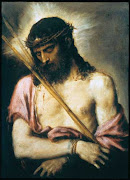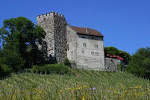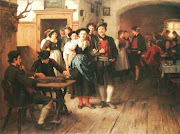
The lies that are put about concerning the Americas are legion.
Secularists and the more bigoted of Protestants would have you believe that only they were good and kind to the natives whereas the wicked Catholic Church treated them cruelly.
It is, of course, an idle lie.
In fact, the reverse is true. Many Protestants were worse and even taught that the natives were, as Cotton Mather put it, "Adam's degenerate seed".
Secularists were far worse and many considered the Indians evolutionary dinosaurs and thus ready for extinction and extermination. Some secularists even considered it a favour to shoot and kill them - after all, evolution was against them!
From the very first the Spanish Catholic Church and Monarchy took the native American Indians under their special protection.
Do not suppose that this prevented all exploitation of Indians. It did not. Evil men will be evil wherever they are. It was a long way to Latin America and the laws of both Church and King were easily ignored by bad governors, bad
latifundistas and bad
encomenderos, of whom there were all too many in the Americas, north and south.
That exploitation took place cannot be doubted as Friar Bartolome de las Casas himself attests to as an eye-witness, though he may have slightly exaggerated for maximum effect.
The difference, however, is this: the Spanish Church and Monarchy set their face against exploitation of the native Americans from the very start, whereas almost all of the Protestant churches and monarchies did not.
King Phillip II, pictured above, son of the Emperor Charles V and later King of England (yes, really - he was Queen Mary Tudor's husband), was particularly vigilant for the protection of the native Indians
Secular revolutionaries and Freemasons, like the rabidly anti-clerical Marquess of Pombal in Portugal, actually made slavery and slaving legal. Other Freemasonic leaders in Europe like the Duc de Choiseul did likewise in the French colonies and even created infamous Penal colonies out of some of them.
So much for the great "Enlightenment" which was supposed to free people from the "slavery" of the Catholic Church.
Hah!
The very reverse is true!
Well, what laws did the Spanish pass to protect the Indians?
Here are 3 famous sets to start with:
1.
The Laws of Burgos of 1512A cardinal archbishop of Seville named Domingo de Mendoza, heard reports of the abuse of the American Indians and sent a group of Dominican missionaries to Hispaniola to investigate.
Friar Antonio de Montesinos preached to the colonists that they were sinning and didn’t possess the right to force the American Indians to serve them. Some of the colonists disagreed and decided the best way to protect their interests was to come together as a group and choose a Franciscan friar named Alonso de Espinal to present their case to King Ferdinand of Spain and refute Montesinos’ accusations.
King Ferdinand when he learned the truth was outraged by the abuses against the American Indians. He founded a group of theologians and academics to come up with solution. In the city of Burgos, thirty-five laws were put into effect to secure the freedom of the American Indians, and also to promote their conversion to Christianity.
The document known as the
Leyes de Burgos (Laws of Burgos) was promulgated on 27 December 1512. They were the first codified set of laws governing the behaviour of Spanish settlers in America, particularly with regards to native Indians.
It enumerated a number of laws for the government of the indigenous peoples of the recently discovered New World. They forbade the maltreatment of natives, and endorsed their conversion to Catholicism. The scope of the laws was originally restricted to the island of Hispaniola, but was later extended to Puerto Rico and Jamaica.
These laws authorized and legalized the colonial practice of creating
encomiendas, where Indians were grouped together to work under colonial masters, limiting the size of these establishments to a minimum of 40 and a maximum of 150 people. However, they also established a minutely regulated regime of work, pay, provisioning, living quarters, hygiene, and care for the Indians in a highly protective and humanitarian spirit. Women more than four months pregnant, for example, were exempted from work.
The document finally prohibited the use of any form of punishment by the
encomenderos, reserving it for officials established in each town for the implementation of the laws. It also ordered that the Indians be catechized, outlawed bigamy, and required that the huts and cabins of the Indians be built together with those of the Spanish. It respected the traditional authorities, granting chiefs exemptions from ordinary jobs and granting them various Indians as servants.
Later amendments in 1513 ordered that after two years of service, the Indians were free to go. By this time they would be civilized and proper Christians and able to govern themselves.
These Laws can be seen here:
http://faculty.smu.edu/bakewell/BAKEWELL/texts/burgoslaws.htmlCan you imagine the early Protestant settlers of North America doing anything like this?
No, me neither.
And the Secularists? Not likely! Their one aim was gold, gold, gold! And they often would tell ANY lie at all about the Church just to get their way.
2.
The New Laws of 1542The New Laws (
Leyes Nuevas) of 1542 were created to prevent the exploitation of the indigenous people by the
encomenderos. They were enforced by Blasco Núñez Vela, the first viceroy of Peru, who quickly became unpopular among the bad
encomenderos and fled to Quito to escape a large revolt by these secret enemies of the Church and the King.
The laws were the results of a reform movement spurred by the refusal of free-booting
encomenderos to follow the Laws of Burgos. During the reign of the Emperor Charles V (who was also King of Spain) the reformers gained steam, with Bartolomé de las Casas as a notable leading advocate. He was able to influence the King, and the fruit of the reformers' labour was the New Laws.
The New Laws solemn prohibited the enslavement of the Indians. It prohibited the sending of indigenous people to work in the mines unless it was absolutely necessary, and required that they be taxed fairly and treated well. However, the promulgation of the New Laws caused great unrest in Spanish America, leading to a revolt in Peru, led by Gonzalo Pizarro, half-brother to the free-booting and Indian-persecuting conqueror of the Incas, Francisco Pizarro. The revolt led to the overthrow of Blasco Núñez Vela. Charles V and the court became alarmed, and finally, on October 20, 1545, 30 of the rules were suppressed.
However, Pizarro, and his ally, Gonzalo Pizarro and Francisco de Carvajal, known as the "Demon of the Andes", were later defeated. They were tried, found guilty of treason and many other crimes, especially against the Indians, and beheaded.
The New Laws can be viewed here:
http://www.csus.edu/indiv/o/obriene/art111/readings/TheNewLawsOfTheIndies1542.htmIgnore the usual ignorant twaddle about "Feudalists" against "Regalists". The reality is that the battle was between crooks, liars, robbers and cheats, on the one hand, against the just and Christian laws of the King of Spain, blessed by the Church, on the other.
Again, can you imagine the mainstream Protestants and Secularists passing such laws?
No, me neither.
3.
La Recopilacion de las Leyes de Indias of 1680This is a comprehensive Code for the good governance of the Spanish colonies in America dn the Phillipines and has large sections for the protection of the Indians. It is so large that it is difficult to summarise.
I can find no translation of it on the internet which gives you some idea of the astonishing degree of bigotry and prejudice that still exists against Catholic Spain and her Empire amongst the kind of North American post-Protestant secularists who tend to dominate the internet.
If it were freely available in English on the net then, of course, many people might find out that the Spanish Catholic and royal government ever had the best interests of the Indians at heart.
It totals 9 books of 6,385 laws grouped into 218 titles.
It can be viewed (in the original Spanish) here:
http://www.bibliojuridica.org/libros/libro.htm?l=1379Later, with coming to power of the anti-clerical Freemasons, these laws were changed to allow slavery once again to be practised legally.
In Mexico, Benito Juarez, the supposedly "great" and "liberal" reformer re-introduced slavery even though he was, himself, partly Indian!
So much for the anti-clerical liberals who so roundly abuse the Church for exploiting the natives.
The Church and Monarchy were the best friends the natives had. It was the free-booting, anti-clerical Freemasons, often smoothely disguising their rapacity under the cloak of utterly false and pretended friendship or tolerance to Church and King, who were the real enemies of the native people of America.
The gentle yoke of Christ the King was the best protection the Indians ever had. When that yoke was hurled off by the secular revolutionaries, anti-clericals, Freemasons and Church-haters, the Indians were worse off than ever before.
...



























.jpg)

















_-002.jpg/220px-Circle_of_Anton_Raphael_Mengs,_Henry_Benedict_Maria_Clement_Stuart,_Cardinal_York_(ca_1750)_-002.jpg)

